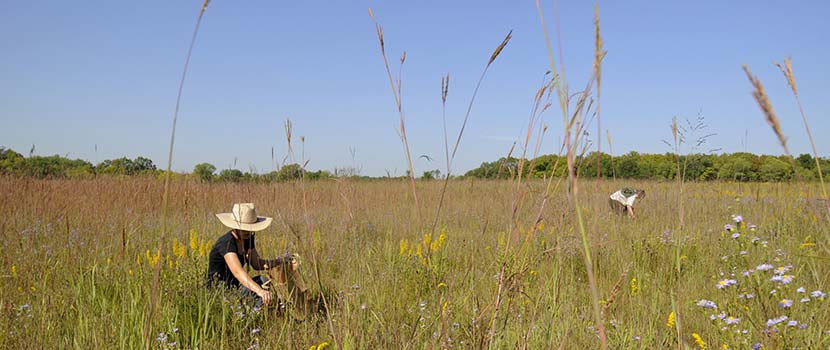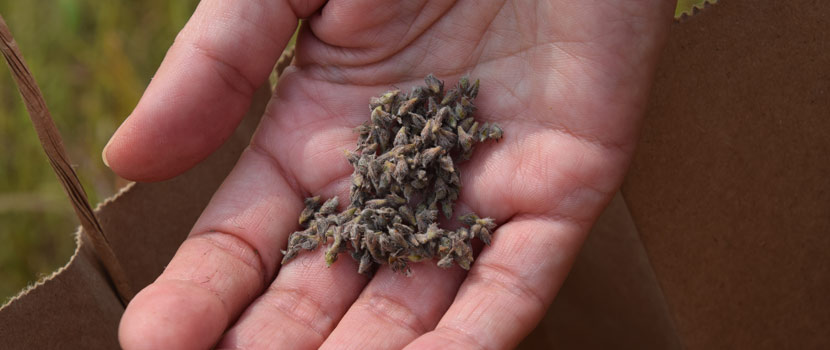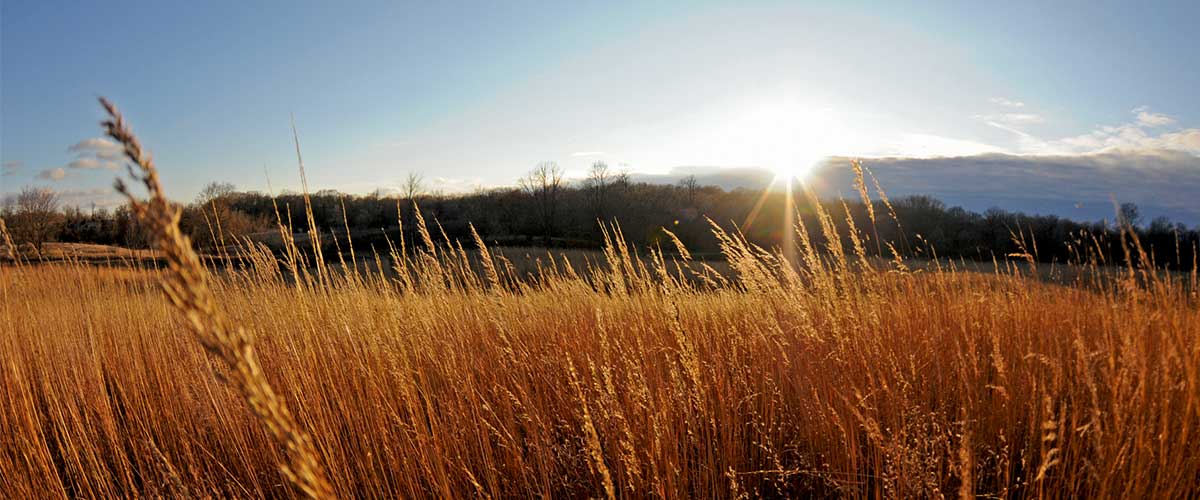
Crow-Hassan Prairie: 50 Years in the Making
By: John Moriarty
September 09, 2019
Category: Resource Management
The expansive prairie at Crow-Hassan Park Reserve is a tranquil and scenic place where tall grasses wave in the breeze, butterflies and bumblebees dart flower to flower, and birds soar all around. It’s truly a gorgeous gem in Three Rivers Park District and it’s hard to imagine that it almost never was.
Crow-Hassan Prairie: Early Beginnings
The original plan was to reforest previous farmlands in what is now Crow-Hassan, however when staff visited the undeveloped park, they discovered sandy soils similar to Crex Meadows and remnant prairie plants.
So an alternate plan was developed. Prairie restoration and management efforts began in 1969 when employees Kathy Heidel and Jack Maurtiz of Hennepin County Park Reserve District (before it was named Three Rivers Park District) worked with Robley Hunt to plant 10 acres of prairie grasses on an old corn field.
When they started planting the prairie, there were no companies or guidebooks to help them along. They just ordered prairie grass and wildflower seed from a seed company in Nebraska because it was the closest place that actually sold native seed.
Then they planted the prairie by driving a pickup truck through the field with the mixed seed in the back and used shovels to throw the seed behind them as they went on their way.

Expanding the Crow-Hassan Prairie
Within a few years, there was a larger effort to expand the prairies in Crow-Hassan and in the early 1970s, 250 acres of prairie were planted.
Instead of shoveling seed from a pickup truck, the seeding was done using older seed drills until Jim Truax developed a drill designed for planting prairie seed. He tested those early drills at Crow-Hassan and now, Truax Company, Inc. is the largest producer of native seed drills in the country.
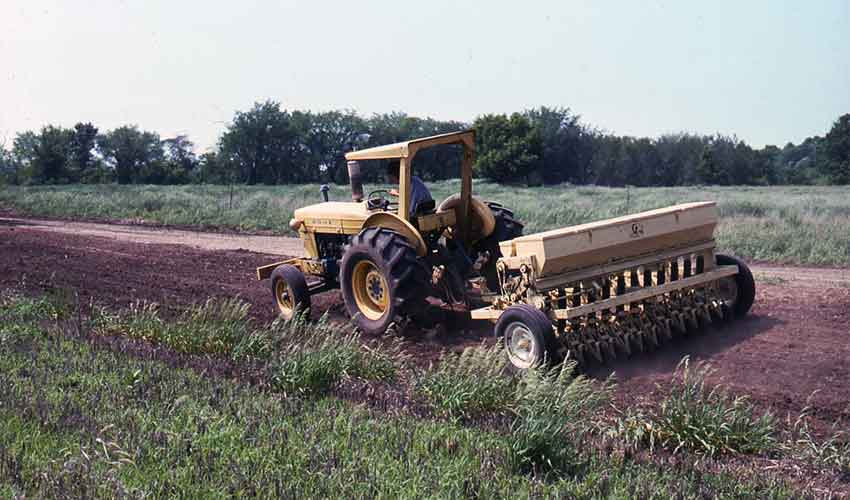
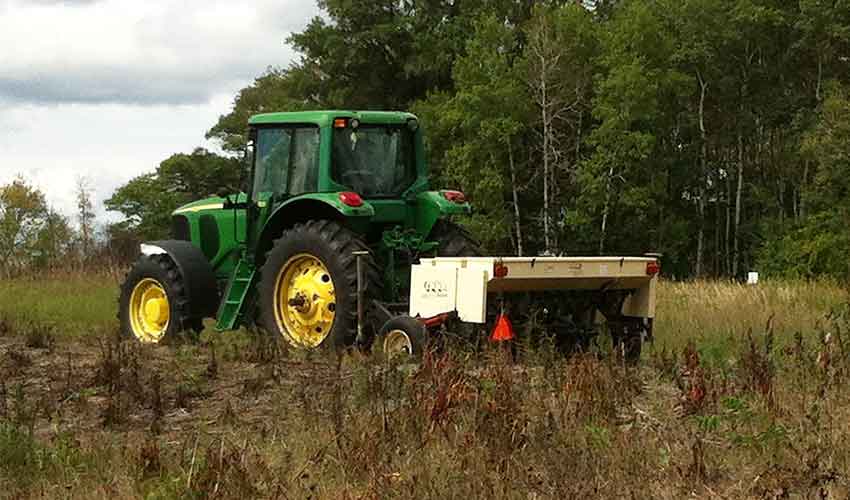
When it came to planting wildflowers, they were added by salvaging plants from areas being destroyed. This effort was led by Ron Bowen, who went on to form Prairie Restorations, Inc. or PRI, which is the leader in prairie restoration plantings and native seed production in Minnesota. At Three Rivers, we continue to work with PRI on prairie projects throughout the Park District.
In the late 1970s, another 300 acres of prairie was restored. These original prairies were planted on recently abandoned agricultural lands that did not have any existing vegetation.
Managing the Restored Prairie
The core prairie was managed for a number of years by controlling weeds, conducting prescribed burns and over-seeding with additional wildflower seeds that were purchased and/or collected by park staff.
The district nursery also began to grow prairie plants, especially species who are difficult to collect seeds from.
One species that was a highlight is hoary puccoon. Lois Larson, propagator extraordinaire, was able to hand collect a few seeds and grew seedlings at the nursery. These were planted in select areas of the prairie and are now widespread and common. This is a plant that is very difficult to grow and is rarely found in restorations.

In the early 2000s, the district received several grants to convert another 50 acres of old fields to prairie. The final prairie planting was in 2014 when 250 acres of old fields were converted using a grant from the Lessard-Sams Outdoor Heritage Committee, also known as the Legacy Fund.
This planting was the most diverse planting with a seed mix of nine species of grasses and 27 species of wildflowers. Additional species will be added in the future.
This project completed a 1,200-acre prairie complex that includes the 850 acres of restored prairie, 170 acres of fire-managed woodlands, and 180 acres of wetlands and lakes. This is the largest restored prairie complex in the metro.
Prescribed Burns and Prairie Management
Three Rivers has been actively managing the prairie since the first unit was planted. We regularly burn, control weeds, and over-seed or hand plant with additional wildflowers.
In the early years, these activities were done when staff was available and with limited safety equipment. Now they are done on a managed rotation.


Our burns are carefully planned with written prescriptions that include local permits, boundaries, equipment and staff needs, and weather restrictions. These plans are approved by the Minnesota Department of Natural Resources.
On the burn crew there are eight to 15 members, several water trucks, and other safety equipment. We put up warning signs at burn sites in the parks and contact local authorities.
What Happens After a Prairie Burn?
Several weeks after the burn, the natural resources management staff surveys the burned unit for invasive weeds and spot treats problem areas. Crow-Hassan is fairly weed-free so control can be completed quickly.
The addition of wildflower seeds are also done soon after the burn. The seeds used are collected by volunteers and mixed with sand. Then they are broadcasted from a truck-mounted spreader.
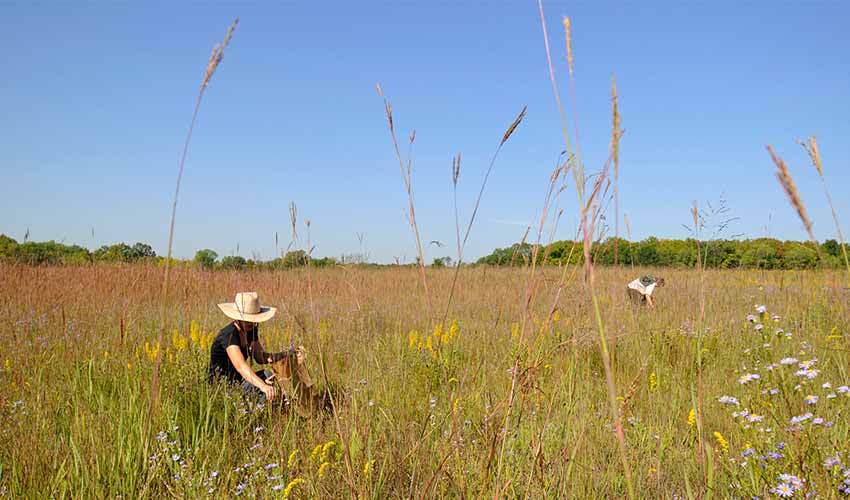
When seed collections started in the 1980s, we were lucky to get a total of 20 to 30 pounds of seed from 10 species. In 2018, we collected over 250 pounds from 70+ species! If interested in volunteering, there are a variety of upcoming seed collection opportunities happening this fall.
For more information about the collection process, check out previous blogs posts: What’s in a Seed? Why Prairie Seed Collection Matters and What Happens to Collected Prairie Seeds?
How Does Prairie Management Impact Wildlife?
While much of the work on the prairie has been about the plants, there has been an increase in the wildlife through natural increases and assisted movements.
In the early years, the Field of Dreams technique of “If you build it, they will come” was the main method. This worked well for the birds and other species that can travel long distances.
The breeding bird diversity on the prairies increased from an average of seven species in the 1970s to 23 species in recent years. Grassland specialists like bobolinks, eastern meadowlarks, and Henslow’s, vesper, and grasshopper sparrows are now common on the prairie.
Pocket gophers, 13-lined ground squirrels, voles, and meadow jumping mice have also recolonized.
Blanding’s and painted turtles use the prairies for nesting and then spend the rest of the year in the wetlands within the prairie complex.
However, some species cannot get to the prairies because of habitat fragmentation or other barriers.
Reintroducing Species in the Prairie
At Three Rivers, we have helped reintroduce several snakes and butterflies to the prairie. Our first reintroduction was of bullsnakes in 1991. More information on this species and its current status can be found in a recent blog post all about bullsnakes.
Plains hognose snakes were recently added in 2017 and will take a number of years to become well established.
The first butterflies reintroduced were regal fritillaries in 2016. We released 24 females in late summer and in the summer of 2018, we estimated over 1,000 regals throughout the prairie.
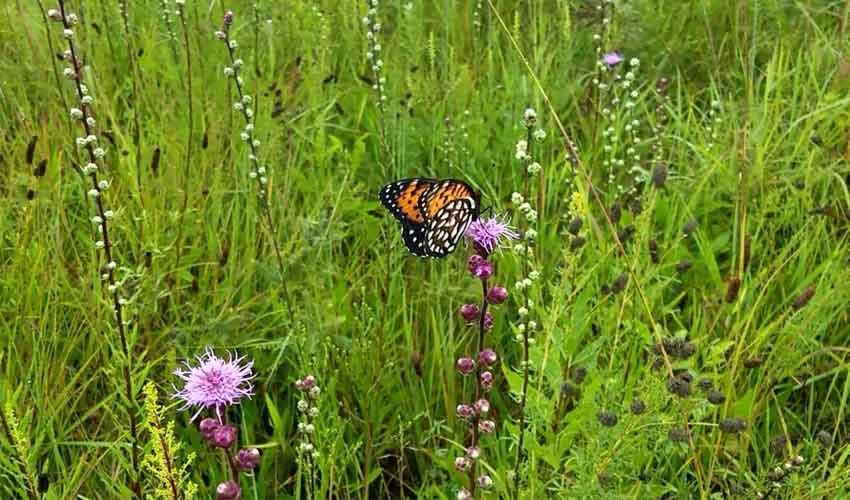
Seeing how well the regal reintroduction went, we released 20 Leonard’s skipper butterflies in late summer of 2018. It will take several years for their populations to grow.
Additional plant and animal species are on the list to add to the prairie and the diversity and quality of this prairie will continue to grow through time.
Crow-Hassan prairie is the largest and oldest prairie in the Park District, but there are other prairies that have been restored and managed in the system, including Carver Park Reserve with 180 acres; Elm Creek Park Reserve with 205 acres (currently in early stages of restoration); Hyland Lake Park Reserve with 70 acres; and Murphy-Hanrehan Park Reserve with 350 acres.
50th Anniversary Prairie Celebration
Want to see the prairies up close and learn more about restoration? Come celebrate with us at the 50th Anniversary Prairie Celebration on September 21. You can participate in guided hikes, wagon rides, telemetry demonstrations, a prairie seed activity and more.
About the Author

John Moriarty is the Senior Manager of Wildlife at Three Rivers Park District and has been with the Park District for 15 years. He has been involved in many of the wildlife restoration efforts and initiated the snake and butterfly efforts. John has led several projects to increase prairie habitat in the Park District. John likes exploring natural areas and looking for all types of plants and animals, but especially turtles.
Related Blog Posts
Prairie Burns: Protecting Precious Habitat with Fire
By: Erin Korsmo
Three Rivers conducts controlled burns at its prairies each spring. Learn what goes into burning a prairie and why fire is so important to preserving this special habitat.
What's in a Seed? Why Prairie Seed Collection Matters
By: Erin Korsmo
Prairies are the most threatened habitat in Minnesota. Some species that depend on prairies are now on endangered and threatened species lists. Read on to learn about the important role volunteer seed collectors play in saving the prairies and the creatures that inhabit them.
What Happens To Collected Prairie Seeds?
By: Erin Korsmo
Getting collected seeds back onto the prairie is not as simple as you might think. Learn what goes on between seed collection and seed planting.

